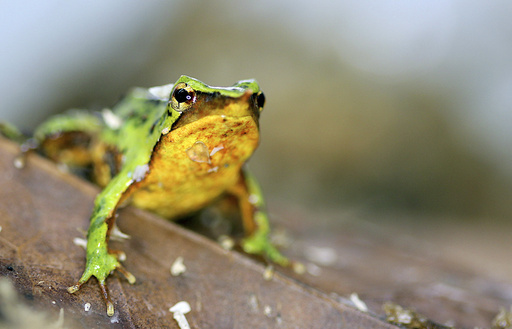
LONDON — The journey of the tiny froglets was remarkable, as they traveled thousands of miles from the forests of southern Chile to London, safeguarded within the vocal sacs of their fathers.
On Monday, London Zoo announced that they successfully welcomed 33 endangered Darwin’s frogs, a species named after the renowned scientist Charles Darwin, into their facility as part of an urgent conservation effort aimed at preventing the species from disappearing entirely.
Recent developments highlighted a worrying trend, as known populations of Darwin’s frogs experienced a staggering 90% decline following the spread of a lethal disease, chytrid fungus, which infiltrated their natural habitat—the Parque Tantauco forests in southern Chile—in 2023. This contagious fungus has devastated amphibian populations on a global scale.
Darwin’s frogs possess a fascinating reproductive method; the females lay eggs, and the males take on the significant role of protecting and nurturing the resulting tadpoles within their vocal sacs to ensure their development in a safe environment.
In October, a team of conservationists embarked on an expedition into the forests of Chile with the goal of locating healthy Darwin’s frogs that had not been affected by the deadly disease. They successfully captured 52 frogs, which made their way in climate-regulated containers on an extensive journey of 7,000 miles (11,265 kilometers) across land and sea to their new home in London.
Among the frogs brought to the zoo, 11 male specimens—each measuring less than 3 centimeters (1.2 inches)—sustained and nurtured the 33 tadpoles that were successfully born in the zoo’s care.
Ben Tapley, the curator for amphibians at London Zoo, remarked on the urgency of their mission by stating, “We knew we were embarking on something special — the clock was ticking, and we needed to act quickly if we were going to save these frogs.” He also noted that the positive outcome of parent-rearing for these froglets represents a “powerful symbol of hope for the species.”
Currently, the frogs are housed in pairs within numerous glass tanks that are designed to mimic their natural environment, complete with moss and regulated temperatures. Zoo officials indicated that a breeding program would be established for the frogs, with plans for any offspring to potentially be reintroduced into the wild in the future.
Andres Valenzuela-Sanchez, a researcher with ZSL, the organization responsible for London Zoo, emphasized the significance of the project, stating it would provide the species with a vital opportunity for recovery.
“These frogs are not only critical for the future of their species but also aid in enhancing our understanding of how to combat chytrid fungus and protect other amphibians worldwide,” he stated.

